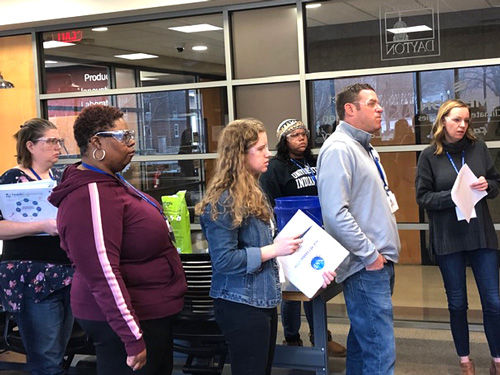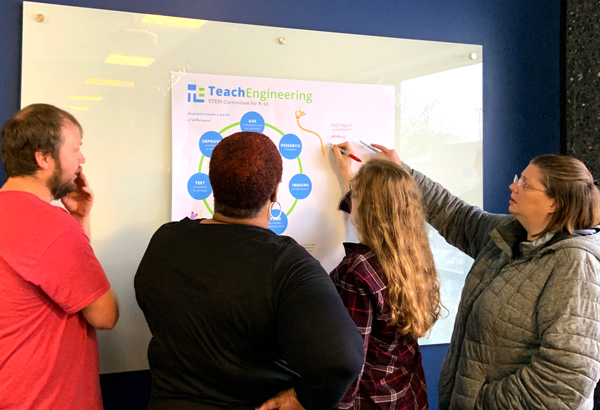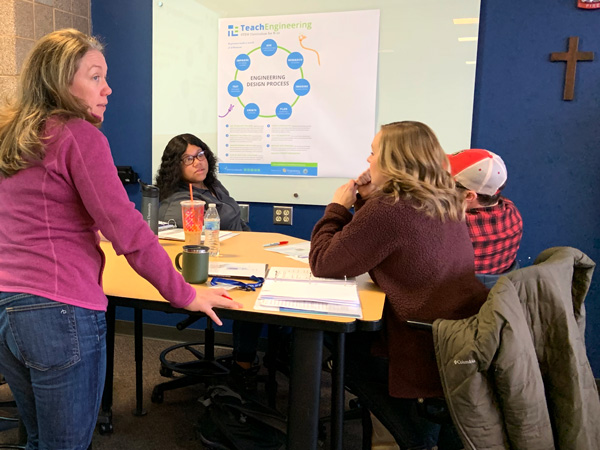UD's ETHOS model trains teachers
This summer, teachers chosen to participate in a technical immersion program co-led by UD and Central State University and funded by the National Science Foundation expected to find themselves applying their skills and learning in countries around the world.
 And while the pandemic has put the program on hold, hopes are high for what it can accomplish in the future.
And while the pandemic has put the program on hold, hopes are high for what it can accomplish in the future.
The original schedule for the ETHOS teachers program, delivered by the University of Dayton with Central State University, included educational workshops during January and February, work with mentors March through May, and travel to each of their immersive programs from June to July.
Teachers, their students and the industry of engineering are expected to benefit from the teachers program. Teachers will develop curricula to be delivered in their classrooms and shared with other teaches, a way to encourage STEM skill development and interest in engineering, especially among populations currently underrepresented in the profession.
“It is going to give [teachers] a glimpse into how engineering as a profession can be used to help people,” said Kellie Schneider, University of Dayton associate professor and program administrator.
The program selected from more than 40 applicants its first 12 teachers — seven in-service and five pre-service. UD student Lanny Sparks, who entered the program as a sophomore math education major with a dual major in mathematics, said he was excited to grow his cultural competency.
“I hope to be able to use this knowledge to better help my future students,” Sparks said. “I can better communicate with them and tailor my curriculum accordingly.”
While the pandemic restricted international travel, Sparks said it has been a valuable learning experience — and he’s hopeful that the program can continue after travel is again possible.
ETHOS began at UD as a program to promote technical immersion and hands-on experience for students. Now, after 18 years, 20 countries and 500 alumni, the program has expanded to include teachers and reach even younger students. A three-year, $598,000 NSF grant funds the teachers program, including a stipend plus travel expenses for each participant. The teachers become part of the 2020 cohort of the NSF Global Science, Technology, Engineering and Mathematics Research Experience for Teachers program.
“For right now, we’ve just had to put the entire program on hold,” Schneider said. “Hopefully at some point in the future we will be able to pick up where we left off.”
Beverly Stambaugh from Fairborn High School in Ohio said she was attracted by the international educational opportunity and building a new curriculum.
“As I work to expand my curriculum through project-based learning,” Stambaugh said, “I want to incorporate the concept of human-centered design into those projects to provide a global perspective to my students.”
Leanne Petry, an associate professor of chemistry from Central State University, administers the program with Schneider and sees benefits for the teachers and the generations of their students to follow.
“With our new global economy and changing demographics, it is imperative that today’s teachers possess enhanced intercultural competencies to guide and educate the next generation of STEM professionals,” Petry said.
If the program can keep with its original timeline for the 2021 cohort, applications will again be accepted this fall for a new group of educators to learn from the ETHOS model.

